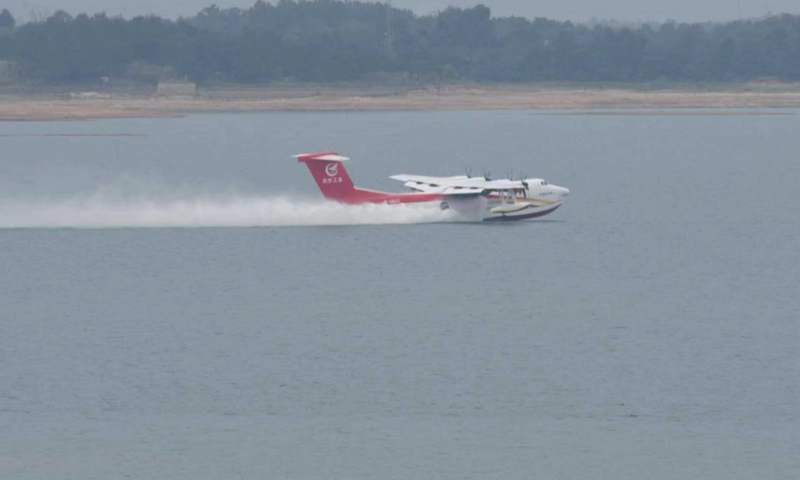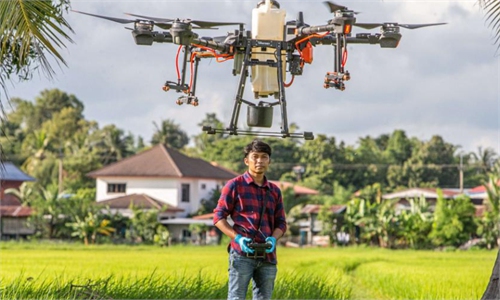China-developed firefighter aircraft draws 12 tons of water in 15 seconds during test flight: AVIC

AG600M Photo: Aviation Industry Corporation of China
China's domestically developed firefighter aircraft AG600M, code name Kunlong, made a successful test on Tuesday, in which the aircraft drew and dropped 12 tons of water. Purchasing contracts of six of the aircraft have been signed, the Global Times learned from the state-owned Aviation Industry Corporation of China (AVIC), the manufacturer of the aircraft.
The test was conducted in an airport in Zhanghe in Jingmen, Central China's Hubei Province. The aircraft completed a series of missions for the test flight. It can draw 12 tons of water in 15 seconds, the AVIC said in a statement sent to the Global Times.
The aircraft kept a good and stable condition during the test and precisely dropped the water at the target, according to the statement.
The test effectively evaluated the core capacity of the aircraft. It is a critical step forward for the aircraft to serve China's emergency rescue system and natural disaster prevention and control system, read the statement.
At the test flight site, two companies signed contracts with the AVIC to purchase six AG600M aircraft, indicating a firm step forward of the aircraft toward the market, according to the statement.
The AG600 is a major aviation equipment developed to meet the urgent needs of China's emergency rescue system and the construction of the national natural disaster prevention and control system. It is China's first large special-mission aircraft developed according to civil airworthiness standards. The AG600, together with the Y-20 large transport aircraft and C919 large passenger airplane, are three of China's key projects in large aircraft development.
The AG600 has a maximum take-off weight of 60 tons and a maximum water holding capacity of 12 tons. With a pressurized cabin, fly-by-wire control, integrated avionics and comprehensive task system, the aircraft is safer, can transport more water, has longer range, and has better potential for serialized development than the original demonstrator aircraft.
The model has achieved 100 percent domestic independent production including engines and key airborne systems based on the domestic industrial, supply and innovation chains.


